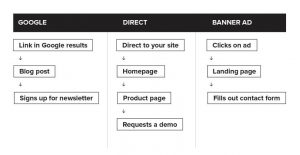
Tell me if this sounds familiar: You log into your laptop and type in the name of the car make and model you are interested in buying. When you log into Facebook five minutes later, an ad for that exact make and model pops up in the right rail. You look down at your phone at a stoplight on the way to work, and an ad for a nearby car dealership with a picture of that car appears on your lockscreen. It seems that the single search term you typed in is following you, adding more context and personalized information along the way.
Once the stuff of science fiction movies, this real-time ad targeting based on search history, location and other online behavior is now a reality. Is it creepy? Maybe a little. But growing research points to an interesting statistic: Consumers like personalized, hyper-targeted ad messaging from brands that they trust.
A recent study from IPG Media and Yahoo of 5,000 mobile users found that the majority of respondents appreciated location-based ad targeting, as well as ad suggestions based on search history and life events. The study also found that the smaller the mobile device, the higher the user expectation for customized information. For example, a user riding public transportation and searching for a restaurant expects his or her smartphone to identify location and deliver answers that make sense in that context. Basically, needing to Google a location term is now viewed as an annoyance.
Though consumers seem to be gradually embracing personalized content that benefits themselves, the study also found that mobile users were turned off by being given information on what their friends liked, visited or were doing at a given moment. Feasibly the negativity there stems from people not wanting the same information to be shared about themselves without permission.
These findings are important, even for businesses that do not use mobile or device tracking in their promotions. They point to a more intuitive approach to reaching consumers that is gaining popularity and will forever change the way we do business. Consumers are becoming increasingly accustomed to doing less work to track down what they need, which puts the burden of visibility even more firmly on the shoulders of the sellers. This may sound overwhelming but can be accomplished through a few simple tasks, including:
- Smart customer-relationship management tools. Keep track of what your customers buy and when – and then anticipate when they will need it again or a complementary product or service. This is a strong way to show that your business values customer service.
- An online presence. Create a simple website. Start a Facebook Business page. Visit local review sites and see what people are saying about you (and respond with class). Use these simple, but effective, marketing strategies.
- Stellar customer service. For all the ways technology has advanced customer engagement, the human touch still matters. Fifty-five percent of consumers would pay more for a better customer service experience, giving even the smallest of businesses an advantage.
Consumer buying habits will continue to evolve with technology, but there’s no reason to get left behind. By understanding these behavior changes, and sticking to tried-and-true customer service and promotional tactics, consumers will keep coming back.
(168)
Report Post







